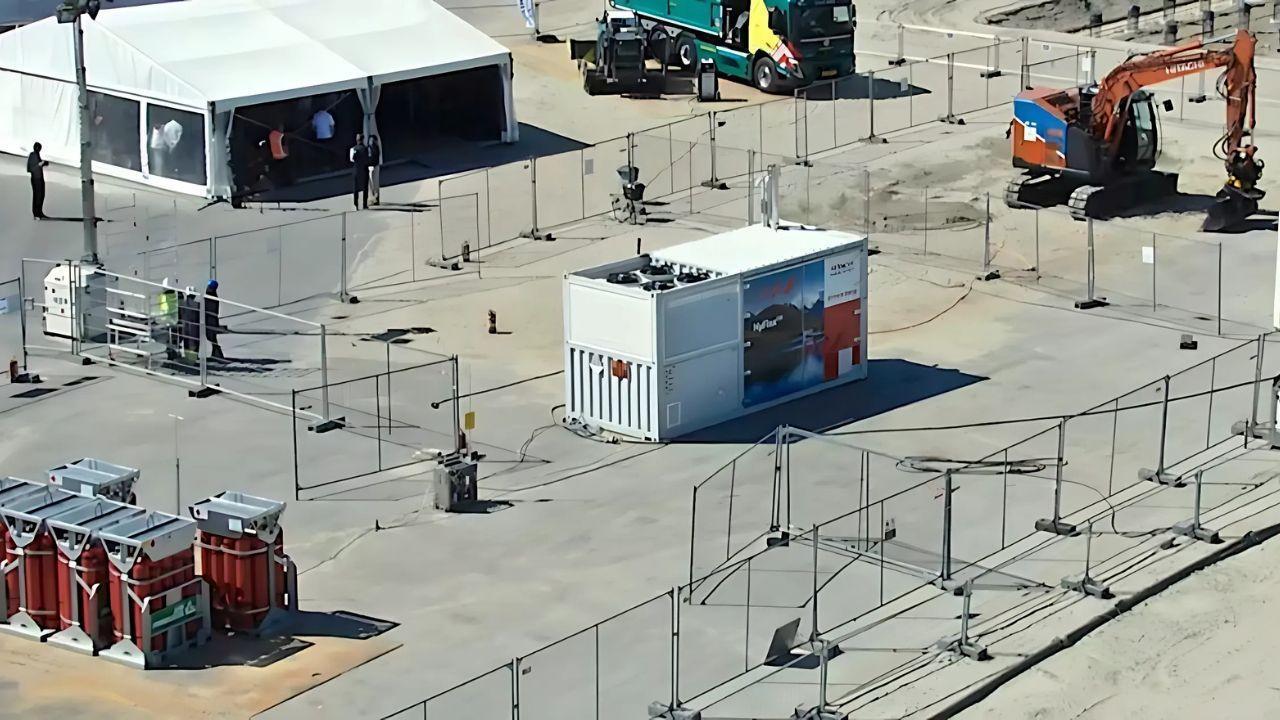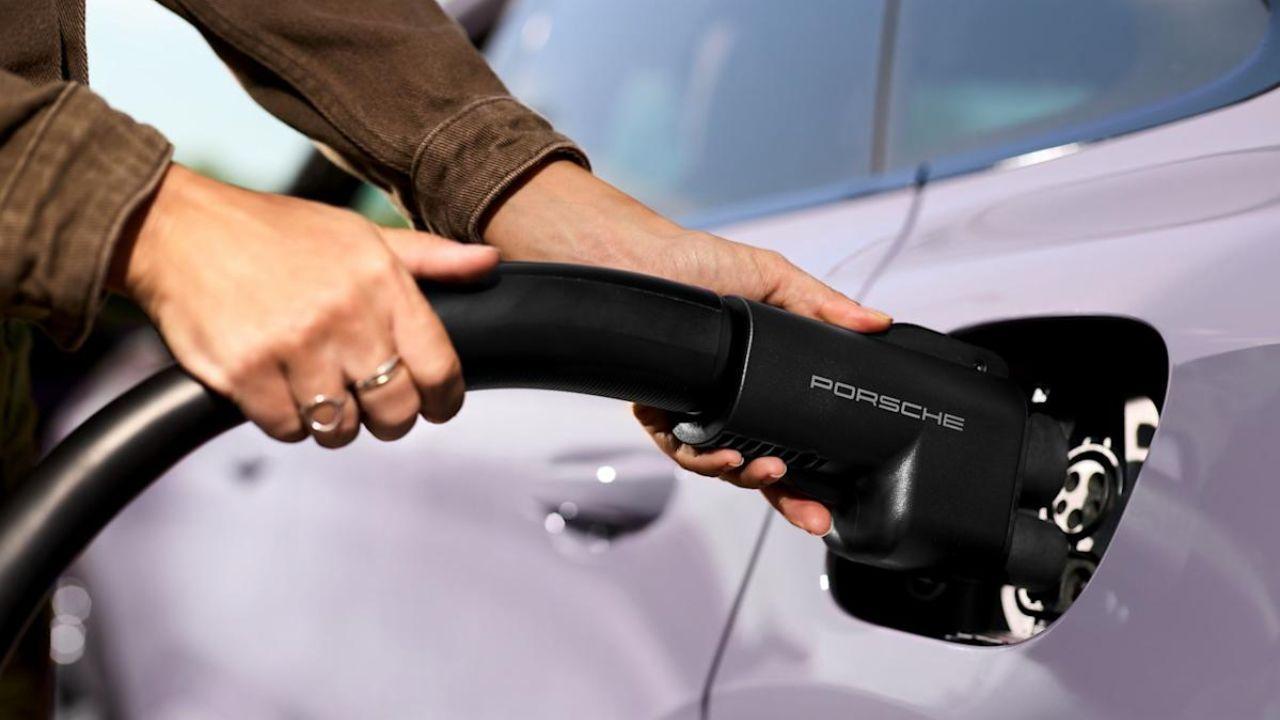
Post by : Amit
A New Leap in Battery Safety Technology
In a significant breakthrough for electric mobility and energy storage, Germany’s Fraunhofer Institute has unveiled a real-time battery health monitoring system that could redefine how the industry manages lithium-ion batteries. This cutting-edge technology promises to offer instant diagnostics on a battery’s health, performance, and safety, directly addressing the growing demand for safer, longer-lasting, and more efficient battery systems in electric vehicles (EVs) and stationary storage units.
The innovation is timely. As EV adoption accelerates worldwide, concerns about battery degradation, safety risks, and unpredictable failures have become more pressing. The Fraunhofer system aims to provide actionable, real-time insights — not just periodic checks — enabling proactive maintenance and reducing the risk of catastrophic battery failures.
Addressing a Core EV Industry Challenge
One of the biggest hurdles for EV manufacturers is ensuring that the batteries powering their vehicles remain both safe and reliable throughout their lifecycle. Traditional battery management systems (BMS) already track voltage, temperature, and current, but they often lack the precision and predictive capabilities needed to detect subtle changes in battery health before a problem escalates.
Fraunhofer’s solution fills this gap by incorporating advanced sensors and AI-driven analytics that continuously evaluate battery cells in real time. This means manufacturers and fleet operators could spot early warning signs of wear, chemical imbalances, or micro-damage that could otherwise go unnoticed.
The potential impact is huge. With better monitoring, battery lifespan could be extended by several years, reducing both replacement costs and environmental waste from discarded cells.
How the Technology Works
At the core of Fraunhofer’s system is a combination of embedded micro-sensors and sophisticated data processing algorithms. These sensors are integrated directly into the battery cell or module, allowing them to monitor internal chemical and structural changes without disrupting the battery’s normal operation.
Using high-frequency signal analysis, the system can detect minute shifts in impedance, temperature gradients, and electrode behavior. The data is then fed into a machine learning model that predicts how the battery will perform under future operating conditions. If a potential safety risk — such as thermal runaway — is detected, the system can immediately alert the driver, fleet manager, or energy grid operator.
Unlike conventional systems that rely on external temperature probes and voltage checks, Fraunhofer’s approach offers a true “inside-out” view of the battery’s condition, enabling more accurate and timely interventions.
Benefits Beyond the EV Market
While EVs are the primary focus, this real-time monitoring system could have wide-reaching applications in other industries. Stationary battery storage systems — used to store renewable energy from solar farms or wind turbines — could greatly benefit from continuous health tracking.
In aerospace, where battery failures can have catastrophic consequences, such technology could serve as an additional layer of safety assurance. Similarly, in the marine industry, where electric ferries and hybrid vessels are emerging, battery monitoring could prevent costly and dangerous incidents at sea.
The technology also offers potential in consumer electronics, though Fraunhofer’s initial focus remains on larger-scale industrial and transportation applications, where the economic and safety impact is greatest.
The Push for Predictive Maintenance
One of the most exciting aspects of Fraunhofer’s technology is its role in enabling predictive maintenance — a growing trend across industries. Instead of replacing batteries based on time or mileage alone, fleet operators could rely on real performance data to determine exactly when a battery needs servicing or replacement.
This approach minimizes downtime, reduces unnecessary replacements, and allows for better allocation of resources. It also helps build trust among consumers, who may be hesitant to adopt EVs due to concerns about expensive battery replacements.
By integrating this system with telematics and fleet management software, operators could track battery health across hundreds or thousands of vehicles, making data-driven decisions that improve operational efficiency.
Safety: The Driving Force
Safety is arguably the most critical benefit of real-time battery health monitoring. Lithium-ion batteries, while highly efficient, can pose fire and explosion risks if damaged or improperly managed. Incidents of EV fires, though rare, often dominate headlines and undermine public confidence.
Fraunhofer’s system can detect early indicators of thermal instability well before they reach dangerous levels. In many cases, it could give operators enough time to shut down the battery or reduce its load, preventing accidents altogether.
This capability could also play a role in regulatory compliance. Governments and safety agencies are increasingly setting stricter battery safety standards, and having an integrated, real-time monitoring system could help manufacturers meet — and exceed — these requirements.
Industry Reactions and Collaboration Opportunities
The unveiling of this technology has already attracted attention from major EV manufacturers and energy companies. Fraunhofer has a strong track record of partnering with industry leaders, and experts expect multiple joint development agreements to follow.
Industry analysts note that integrating such systems into existing EV platforms could be challenging, especially when it comes to retrofitting older models. However, for new vehicle programs still in the design phase, this technology could be built in from the ground up.
Several fleet operators in Europe have already expressed interest in pilot programs, with potential applications in public transportation, logistics, and ride-hailing services.
The Sustainability Advantage
Battery longevity is not just a cost issue — it’s an environmental one. Extending the usable life of lithium-ion batteries means fewer raw materials need to be mined, fewer manufacturing emissions are produced, and fewer used batteries end up in recycling or landfill facilities.
Fraunhofer’s system supports the circular economy by helping ensure that every battery delivers maximum value before it reaches the end of its life. Combined with battery recycling initiatives, this approach could make EVs and energy storage solutions even more sustainable.
A Step Toward Energy Transition Goals
Many governments, including Germany’s, have set ambitious carbon-neutral transportation goals for the coming decades. Achieving these targets depends heavily on battery reliability and consumer confidence in electric mobility.
Fraunhofer’s innovation directly supports these goals by addressing two major barriers to EV adoption: range anxiety and battery replacement costs. When drivers know that their battery is being actively monitored and maintained for optimal performance, they are more likely to make the switch from combustion engines to electric power.
Navigating Difficulties
Despite its promise, the technology faces several challenges before it can achieve widespread adoption. These include:
Fraunhofer is reportedly working with industry partners to address these issues, aiming for a commercial rollout within the next three to five years.
Advancing the Vision
If Fraunhofer’s real-time battery health monitoring system lives up to its promise, it could become a new industry standard for EVs and large-scale energy storage. By combining safety, longevity, and predictive maintenance, it offers a comprehensive solution to some of the most persistent challenges in the battery world.
This innovation could also pave the way for self-healing battery systems in the future — where AI not only detects problems but also triggers automated corrective measures to restore battery performance.
Fraunhofer’s new real-time battery health monitoring technology represents a significant milestone in battery management systems. Its ability to detect and predict battery issues in real time could revolutionize how we operate electric vehicles, manage renewable energy storage, and even power critical aerospace and marine applications.
In an era where energy efficiency, sustainability, and safety are top priorities, this breakthrough could be the missing piece in making batteries — and by extension, clean transportation — more dependable than ever.
Battery health monitoring, EV battery safety










Vande Bharat Passenger’s Spitting Incident Sparks Nationwide Debate
A passenger spitting on the Vande Bharat Express floor sparks online debate on civic sense cleanline

OnTrac Introduces Ground Essentials Service for Affordable and Reliable Shipping
OnTrac launches Ground Essentials a new service offering cost-effective parcel delivery with up to 3

Breeze Airways Earns Five-Star Status as North America's Top Airline
Breeze Airways achieves a five-star rating marking it as North America's leading major airline for 2

Royal Enfield Cuts Prices on 350cc Bikes After GST Rate Reduction
Royal Enfield reduces prices on 350cc motorcycles from September 22, 2025, following GST rate cuts,

Viva ACP Boosts Bus Safety with Strong Lightweight Aluminium Panels
Viva ACP’s panels make buses safer lighter and stronger—saving energy and protecting passengers with

Steelpaint’s Stelcatec Coating Gets UK Rail Approval
Steelpaint’s Stelcatec coating approved by UK Network Rail for durable, fast, and effective protecti